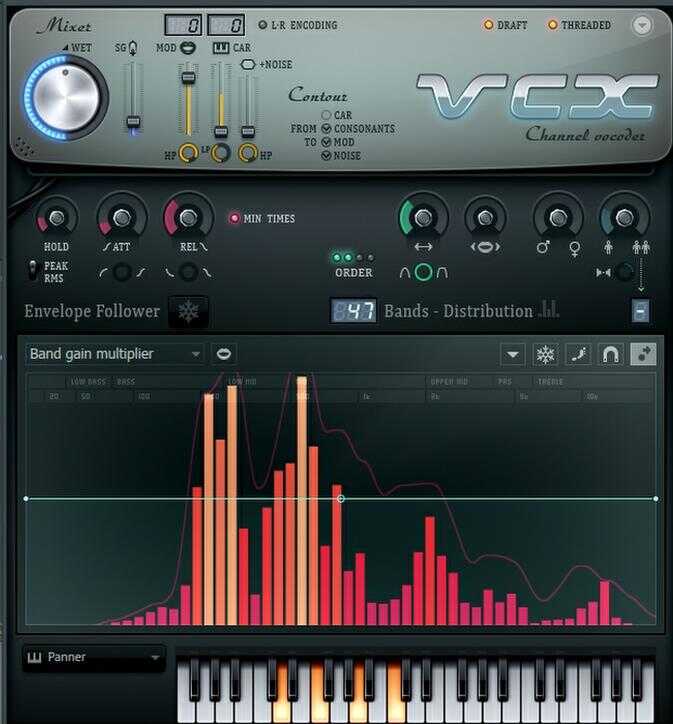Introduction:
In today’s digital music-making landscape, the ability to create custom Virtual Studio Technology (VST) plugins has become indispensable for countless musicians, producers, and sound designers. These plugins provide limitless possibilities for expanding your sonic palette and achieving unique, professional-grade audio effects. This comprehensive guide will equip you with a step-by-step roadmap to embark on your VST plugin development journey.
From understanding the fundamental concepts to delving into the intricate details of programming, we will delve into the world of VST plugin creation. Whether you’re a seasoned musician seeking to enhance your workflow or a developer eager to venture into audio programming, this guide will provide you with the knowledge and insights to unlock your creative potential.

Image: synthsavvy.com
Understanding VST Plugins:
VST stands for Virtual Studio Technology, a prevalent plugin format that allows for the integration of external audio processors within sequencer software. These plugins operate as standalone modules within your DAW (Digital Audio Workstation), enabling you to add effects, process audio, and manipulate sound with ease.
VST plugins are highly versatile tools that have revolutionized music production. They empower users to create sophisticated soundscapes, enhance existing recordings, and explore new sonic horizons. From vintage-inspired distortions to cutting-edge synthesis, the possibilities are endless.
Step 1: Choose a Programming Language:
The first step in creating a VST plugin is selecting a programming language. C++ remains the industry standard for VST development, offering a powerful combination of speed, efficiency, and control. However, if you’re new to programming, languages like Python or Lua can be more accessible and provide ample functionality for simpler plugins.
Step 2: Install the VST SDK:
The VST Software Development Kit (SDK) provides the essential frameworks and tools required for creating VST plugins. Download and install the appropriate SDK for your operating system and programming language to begin development.

Image: howtomakeelectronicmusic.com
Step 3: Create a Project Template:
Establish a project template that defines the basic structure and codebase for your plugin. This will serve as a starting point for future plugins, streamlining the development process.
Step 4: Implement the Plugin Interface:
The VST plugin interface defines the communication protocol between your plugin and the host software (DAW). Implement the required methods and functions as outlined in the VST SDK documentation.
Step 5: Process Audio:
The core of your plugin lies in the audio processing functions. Implement the processAudio() method to manipulate the incoming audio data. This is where you’ll apply effects, filters, or any other desired audio transformations.
Step 6: Design the User Interface:
Create a user interface (UI) that allows users to interact with your plugin. Design sliders, knobs, and other controls to provide intuitive control over the audio processing parameters.
Step 7: Compilation and Testing:
Compile your plugin code and test it thoroughly. Utilize various audio samples to ensure your plugin functions as intended and adheres to industry standards.
Expert Insights:
“The key to creating high-quality VST plugins lies in understanding the underlying audio algorithms and applying them efficiently.” – Mark Weach, Renowned DSP Engineer
“Don’t be afraid to experiment with different ideas. The beauty of VST development is the limitless creative possibilities it offers.” – Lisa Bella Donna, Grammy-Nominated Producer
Actionable Tips:
– Familiarize yourself with audio signal processing fundamentals before diving into plugin development.
– Start with simple plugins to build a solid foundation and gradually increase complexity.
– Seek feedback from other musicians and sound engineers to refine your designs and improve usability.
How To Make Vst Plugins
Conclusion:
Creating VST plugins empowers musicians and developers to shape their sound within the digital realm. By following this comprehensive guide and embracing a spirit of exploration, you can unlock a world of creative possibilities and enhance your musical productions to unparalleled heights. Continue exploring, refining your skills, and sharing your creations with the global music community. Let your imagination become the driving force behind groundbreaking VST plugins that inspire and empower fellow musicians.







